Vahram Tadevosyan
StreamingT2V: Consistent, Dynamic, and Extendable Long Video Generation from Text
Mar 21, 2024
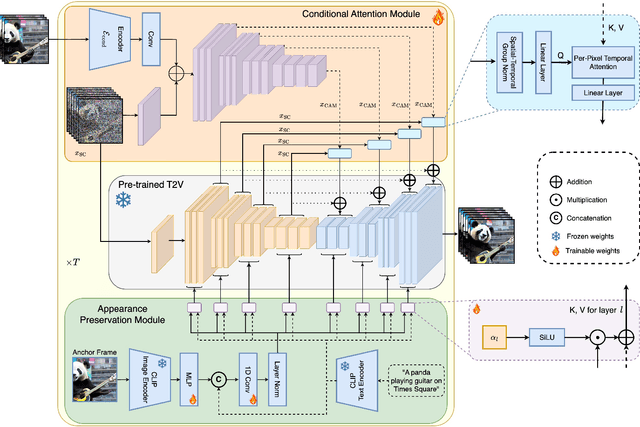
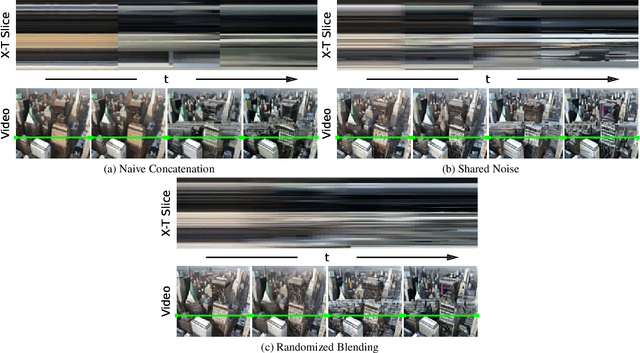

Abstract:Text-to-video diffusion models enable the generation of high-quality videos that follow text instructions, making it easy to create diverse and individual content. However, existing approaches mostly focus on high-quality short video generation (typically 16 or 24 frames), ending up with hard-cuts when naively extended to the case of long video synthesis. To overcome these limitations, we introduce StreamingT2V, an autoregressive approach for long video generation of 80, 240, 600, 1200 or more frames with smooth transitions. The key components are:(i) a short-term memory block called conditional attention module (CAM), which conditions the current generation on the features extracted from the previous chunk via an attentional mechanism, leading to consistent chunk transitions, (ii) a long-term memory block called appearance preservation module, which extracts high-level scene and object features from the first video chunk to prevent the model from forgetting the initial scene, and (iii) a randomized blending approach that enables to apply a video enhancer autoregressively for infinitely long videos without inconsistencies between chunks. Experiments show that StreamingT2V generates high motion amount. In contrast, all competing image-to-video methods are prone to video stagnation when applied naively in an autoregressive manner. Thus, we propose with StreamingT2V a high-quality seamless text-to-long video generator that outperforms competitors with consistency and motion. Our code will be available at: https://github.com/Picsart-AI-Research/StreamingT2V
Text2Video-Zero: Text-to-Image Diffusion Models are Zero-Shot Video Generators
Mar 23, 2023
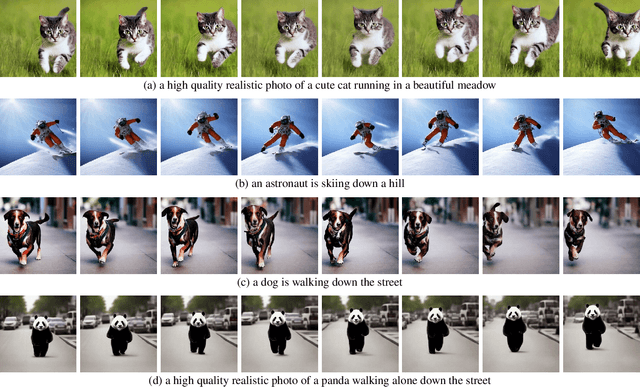
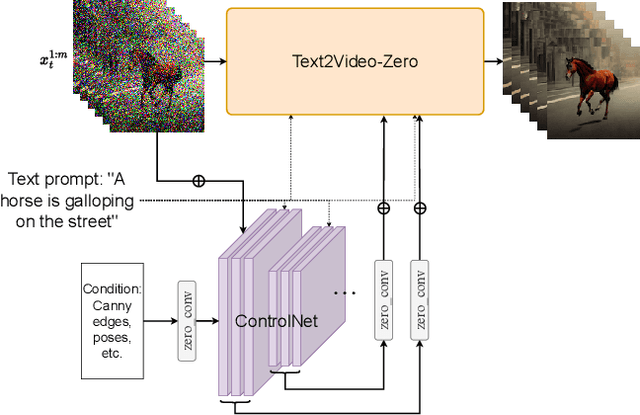
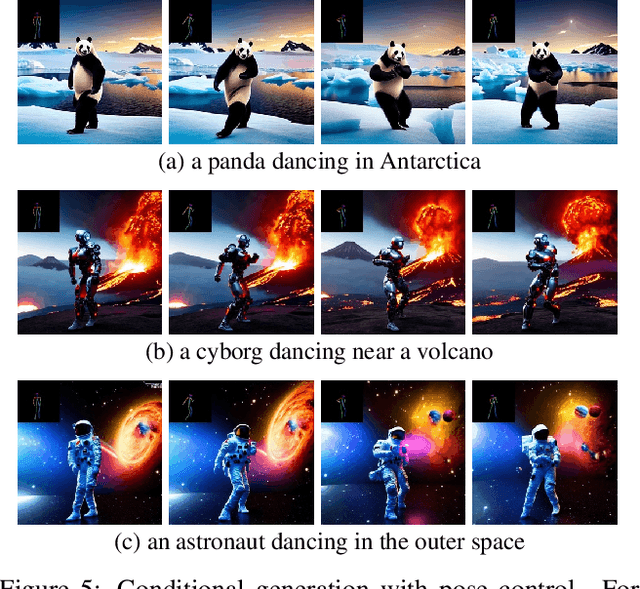
Abstract:Recent text-to-video generation approaches rely on computationally heavy training and require large-scale video datasets. In this paper, we introduce a new task of zero-shot text-to-video generation and propose a low-cost approach (without any training or optimization) by leveraging the power of existing text-to-image synthesis methods (e.g., Stable Diffusion), making them suitable for the video domain. Our key modifications include (i) enriching the latent codes of the generated frames with motion dynamics to keep the global scene and the background time consistent; and (ii) reprogramming frame-level self-attention using a new cross-frame attention of each frame on the first frame, to preserve the context, appearance, and identity of the foreground object. Experiments show that this leads to low overhead, yet high-quality and remarkably consistent video generation. Moreover, our approach is not limited to text-to-video synthesis but is also applicable to other tasks such as conditional and content-specialized video generation, and Video Instruct-Pix2Pix, i.e., instruction-guided video editing. As experiments show, our method performs comparably or sometimes better than recent approaches, despite not being trained on additional video data. Our code will be open sourced at: https://github.com/Picsart-AI-Research/Text2Video-Zero .
Image Completion with Heterogeneously Filtered Spectral Hints
Nov 07, 2022
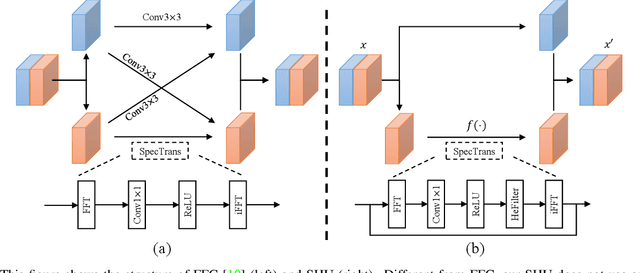


Abstract:Image completion with large-scale free-form missing regions is one of the most challenging tasks for the computer vision community. While researchers pursue better solutions, drawbacks such as pattern unawareness, blurry textures, and structure distortion remain noticeable, and thus leave space for improvement. To overcome these challenges, we propose a new StyleGAN-based image completion network, Spectral Hint GAN (SH-GAN), inside which a carefully designed spectral processing module, Spectral Hint Unit, is introduced. We also propose two novel 2D spectral processing strategies, Heterogeneous Filtering and Gaussian Split that well-fit modern deep learning models and may further be extended to other tasks. From our inclusive experiments, we demonstrate that our model can reach FID scores of 3.4134 and 7.0277 on the benchmark datasets FFHQ and Places2, and therefore outperforms prior works and reaches a new state-of-the-art. We also prove the effectiveness of our design via ablation studies, from which one may notice that the aforementioned challenges, i.e. pattern unawareness, blurry textures, and structure distortion, can be noticeably resolved. Our code will be open-sourced at: https://github.com/SHI-Labs/SH-GAN.
 Add to Chrome
Add to Chrome Add to Firefox
Add to Firefox Add to Edge
Add to Edge